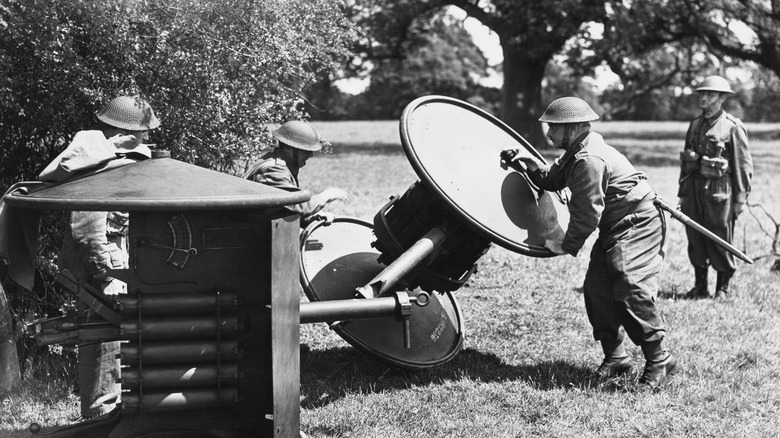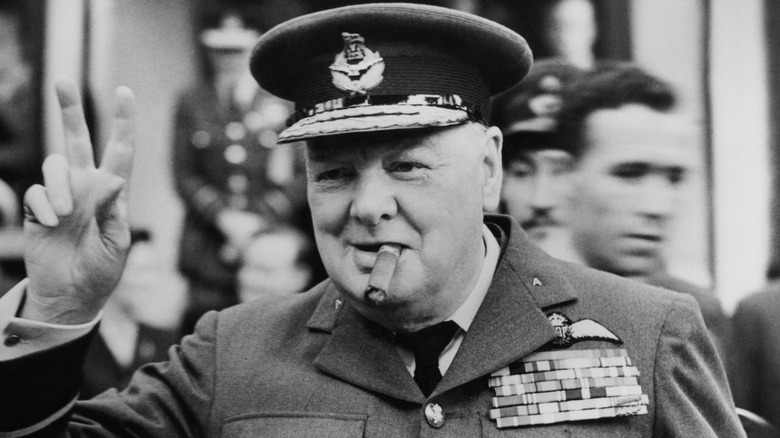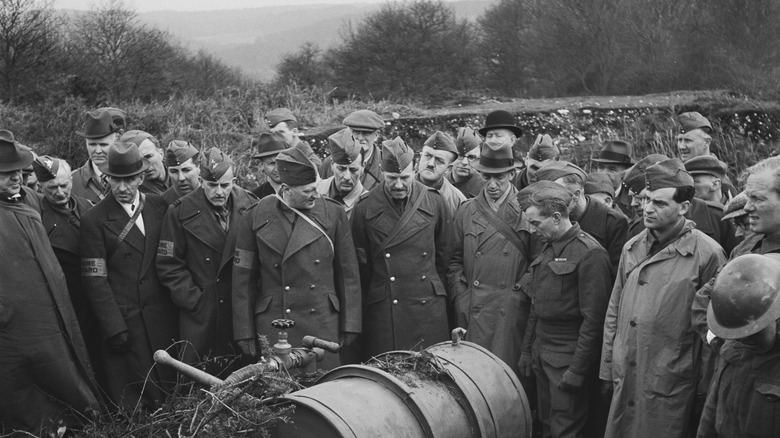Why This British Anti-Tank Artillery Gun Had Such A Bad Reputation
World War II was a grotesque spectacle of suffering and geopolitical schisms, but it was also a demonstration of a rich diversity of technology — some weapons. Ones such as the German 88mm anti-tank scripted a lethal history owing to their destructive potential, while others like the British Smith Gun were pushed into obscurity for a not-so-decorated history. Even the latter's tale of origin seems unfit for a war as its history traces back to the Trianco toy company.
The Smith Gun was designed by etired British Army Maj. William H. Smith in 1940. At the time, Smith was the managing director of a civil engineering firm that made toys. The most striking aspect of the odd-looking artillery gun was its unconventional engineering, as the whole assembly looks more like a huge cylindrical mailbox with a subtly conical cover at the top and a circular base.
The solid round elements were supposed to help with towing it across, even using civilian cars, as some pictures show. In his book "The Home Guard: A Military and Political History," S. P. Mackenzie notes that the Smith Gun was originally seen as a cheap, easy-to-produce anti-tank weapon. As promising as the whole idea sounds, executing it was no cakewalk given the U.K.'s reputation as slow to weaponry innovations back then. According to the Imperial War Museum, it was designed in a span of merely five weeks, and was sadly declared obselete just five years after its commissioning.
A challenging history
Smith's creation faced multiple rejections initially, but despite the challenges, the weapon made it to the top Army demonstrations. Interesestingly, it was none other than U.K. Prime Minister Winston Churchill who saw potential in the Smith Gun. An avid gun collector, Churchill saw that the Smith Gun was approved for production in 1941.
Owing to production snags and related challenges, it was only in 1942 that the first batch of roughly 4,000 Smith Guns made their way into the hands of the defense corps. Some accounts suggest that just over 10,500 units were assembled in the entire run. The entire Smith Gun assembly was flanked at the top and bottom by two thick disc-wheels of 48-inch in diameter. On the upside, it was capable of firing two kinds of shells.
It could be loaded with 8-pound HE anti-personnel shells as well as anti-tank rounds weighing six pounds. It relied on a percussion firing mechanism, which opened the doors for safety concerns. For example, faulty fuse caps gave it a bad reputation citing risks for the personnel tasked with deployment and artillery discharge. The Smith Gun carried a total of 10 shells at once, while a batch of 40 additional rounds could be carried with it in a trailer. It was designated for the Home Defense units.
Underperforming at its very core
Mackenzie mentions in his book that mobility challenges were often raised with regard to the Smith Gun. "As a Cornwall battalion commander bluntly stated, it had a terrifying reputation for killing its crew," he writes. It was reportedly labelled as a junk weapon in some press coverage, but the Smith Gun also had an ardent base of fans among the defense personnel ranks who appreciated the simplicity and versatility.
It appears that safety concerns weren't the sole reason for the short life span of the Smith Gun. "It had a very low muzzle velocity, was inaccurate, and had an effective range of only 100-300 yards," says Mackenzie's account. Specifically, the Smith Gun's anti-personnel projectiles only had a range of 500 yards, while the anti-tank rounds could only go up to 200 yards.
Despite its shortcomings, the Smith Gun was quite some warfare curiosity. "As a weapon, the Smith Gun had little practical value, but as a symbol for the Home Guard it had a useful propaganda impact," writes the National Army Museum, which also has some pristine examples of the Smith Gun in its collection.


